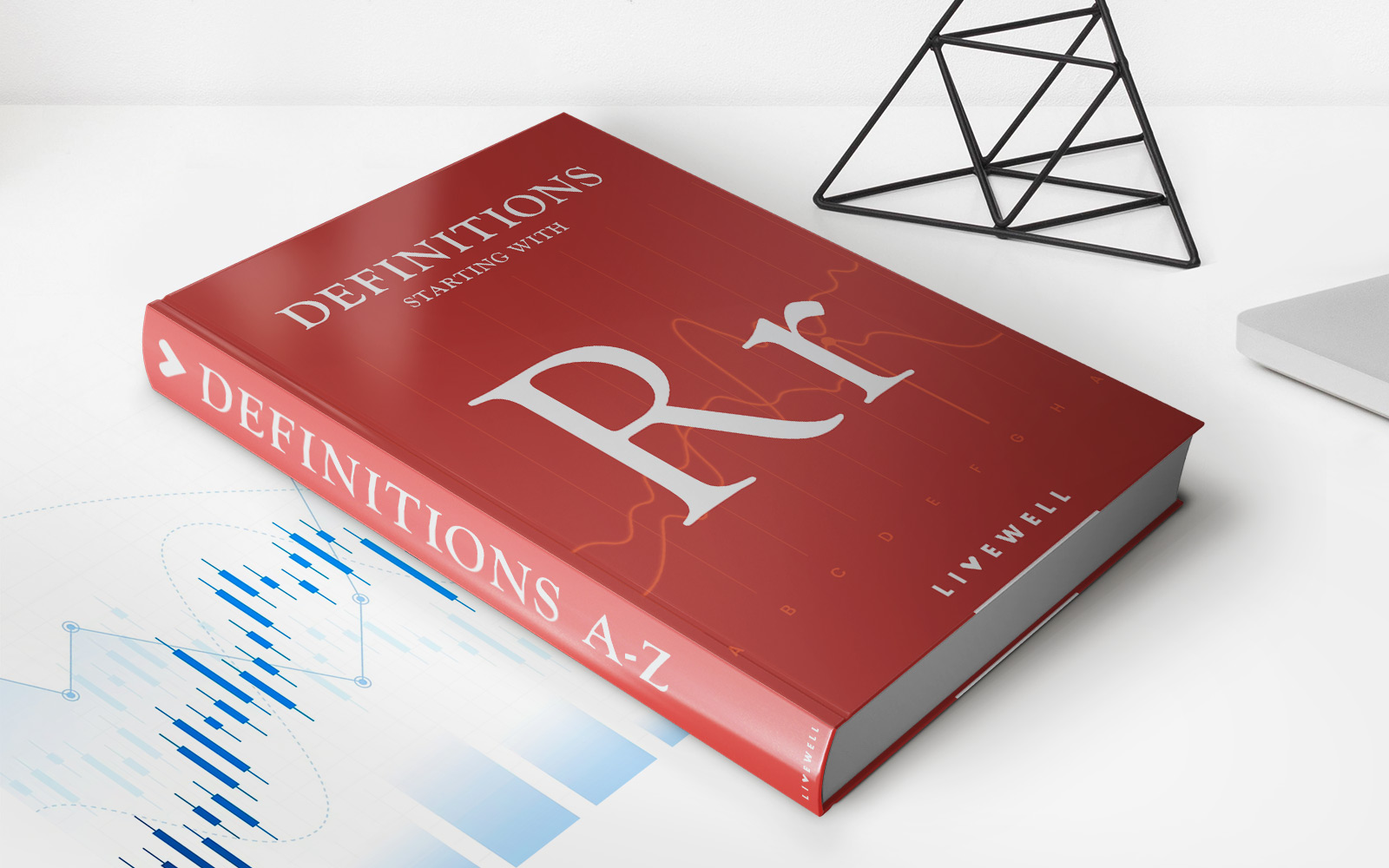

Finance
How Do Pension Funds Invest In Real Estate?
Published: January 23, 2024
Discover how pension funds strategically invest in real estate to diversify their finance portfolios and achieve long-term growth. Learn about the key considerations and benefits.
(Many of the links in this article redirect to a specific reviewed product. Your purchase of these products through affiliate links helps to generate commission for LiveWell, at no extra cost. Learn more)
Table of Contents
**
Introduction
**
Pension funds play a pivotal role in securing the financial future of millions of individuals around the world. These funds are entrusted with the task of managing and growing the retirement savings of employees, often through diverse investment strategies. While pension funds traditionally allocate a significant portion of their portfolios to stocks and bonds, real estate has emerged as an increasingly attractive investment avenue. This shift is driven by the potential for long-term growth, income generation, and portfolio diversification that real estate offers.
Real estate investment by pension funds involves strategic decision-making, meticulous due diligence, and a deep understanding of the dynamics of the property market. In this article, we will delve into the intricacies of how pension funds invest in real estate, exploring their investment strategies, available options, influencing factors, as well as the associated risks and challenges. By gaining insight into the world of real estate investment within the realm of pension funds, readers will develop a comprehensive understanding of this dynamic and impactful sector.
Pension Fund Investment Strategy
When it comes to investing in real estate, pension funds typically adhere to a well-defined investment strategy tailored to meet their long-term financial objectives. This strategy involves careful consideration of various factors, including risk tolerance, return expectations, and portfolio diversification. One common approach is to allocate a certain percentage of the fund’s assets to real estate investments, aiming to achieve a balance between risk and return.
Furthermore, pension funds may opt for direct real estate investment, where they acquire and manage properties directly, or indirect investment through real estate investment trusts (REITs), real estate mutual funds, or private equity real estate funds. Each avenue offers distinct advantages and considerations, influencing the overall investment strategy.
Moreover, pension funds often prioritize income generation and capital appreciation when formulating their real estate investment strategy. This entails identifying properties that can generate consistent rental income while also appreciating in value over time. Additionally, sustainability and environmental considerations are increasingly factored into investment decisions, aligning with the growing emphasis on responsible and ethical investing.
Overall, the investment strategy of pension funds in real estate is underpinned by a meticulous approach to risk management, portfolio diversification, and the pursuit of long-term, sustainable returns. By strategically integrating real estate into their investment portfolios, pension funds aim to optimize risk-adjusted returns while safeguarding the financial security of their beneficiaries.
Real Estate Investment Options for Pension Funds
When it comes to real estate investment, pension funds have a diverse array of options at their disposal, each offering unique benefits and considerations. One prevalent avenue is direct real estate investment, wherein pension funds acquire and manage physical properties such as office buildings, residential complexes, retail spaces, and industrial facilities. This approach provides direct ownership and operational control, allowing funds to tailor their investment to specific property types and locations.
Another option for pension funds is indirect real estate investment through real estate investment trusts (REITs). REITs are companies that own, operate, or finance income-generating real estate across a range of property sectors. By investing in REITs, pension funds can gain exposure to a diversified portfolio of properties without directly owning or managing them. This offers liquidity and diversification benefits while potentially providing attractive dividend yields.
Furthermore, pension funds may consider investing in real estate through real estate mutual funds, which pool capital from various investors to invest in a diversified portfolio of properties. This approach provides a level of diversification and professional management, allowing pension funds to access real estate markets with relatively lower capital requirements compared to direct investments.
Private equity real estate funds also present an option for pension funds seeking exposure to real estate. These funds typically invest in properties with the potential for value creation through active management strategies such as redevelopment, repositioning, or operational enhancements. By participating in private equity real estate funds, pension funds can access specialized investment expertise and potentially higher return opportunities.
Overall, the range of real estate investment options available to pension funds enables them to tailor their investment approach based on risk appetite, return objectives, and portfolio diversification requirements. By leveraging these options, pension funds can effectively integrate real estate into their investment portfolios while aligning with their long-term financial goals.
Factors Influencing Real Estate Investment Decisions
When pension funds contemplate real estate investments, they are influenced by a multitude of factors that shape their decision-making process. One pivotal consideration is the economic outlook and market conditions. Pension funds closely analyze macroeconomic indicators, interest rate trends, and demographic shifts to assess the overall health and growth potential of real estate markets. Additionally, they evaluate local market dynamics, including supply and demand fundamentals, rental trends, and vacancy rates, to identify attractive investment opportunities.
Regulatory and legal considerations also weigh heavily on real estate investment decisions. Pension funds meticulously navigate zoning regulations, land use policies, and property taxation frameworks to mitigate regulatory risks and ensure compliance with applicable laws. Moreover, environmental and sustainability factors increasingly influence investment decisions, with a growing emphasis on environmentally responsible and energy-efficient properties.
Furthermore, the financial feasibility of real estate investments is a critical factor for pension funds. They conduct thorough financial analysis, assessing potential cash flows, operating expenses, and financing options to gauge the income-generating potential and long-term viability of prospective investments. Factors such as leverage, debt service coverage ratios, and exit strategies are carefully evaluated to optimize risk-adjusted returns.
The location and quality of properties also significantly impact investment decisions. Pension funds prioritize properties located in established or emerging markets with strong growth prospects and access to essential amenities and infrastructure. Additionally, the physical condition, architectural design, and technological features of properties are assessed to ensure alignment with evolving tenant preferences and industry standards.
Moreover, the expertise and track record of real estate managers and operators play a crucial role in influencing investment decisions. Pension funds seek partnerships with experienced and reputable real estate professionals who demonstrate a strong understanding of market dynamics, effective asset management capabilities, and a commitment to sustainable practices.
Overall, the multifaceted nature of real estate investment decisions for pension funds underscores the need for comprehensive analysis and strategic foresight. By meticulously considering economic, regulatory, financial, locational, and operational factors, pension funds aim to make informed and prudent real estate investment decisions that align with their long-term investment objectives.
Risks and Challenges in Real Estate Investment
While real estate investment offers compelling opportunities for pension funds, it is not devoid of risks and challenges. One of the primary risks is market volatility, which can lead to fluctuations in property values and rental income. Economic downturns, changes in interest rates, and geopolitical events can impact real estate markets, underscoring the importance of robust risk management strategies and diversification.
Liquidity risk is another significant consideration. Unlike publicly traded assets, real estate investments often lack liquidity, making it challenging to swiftly sell properties in response to changing market conditions or fund redemption requests. Pension funds must carefully balance their real estate allocations to ensure sufficient liquidity while optimizing long-term returns.
Operational risks associated with property management and maintenance also pose challenges for pension funds. Property vacancies, unexpected maintenance costs, and tenant-related issues can impact cash flows and overall investment performance. Effective asset management and proactive tenant relations are essential in mitigating these operational risks.
Regulatory and legal risks add another layer of complexity to real estate investment. Changes in zoning laws, environmental regulations, or tax policies can affect the profitability and compliance of real estate holdings. Pension funds must stay abreast of evolving regulatory landscapes and ensure robust legal due diligence when acquiring and managing properties.
Furthermore, interest rate risk is a critical consideration for pension funds investing in real estate. Fluctuations in interest rates can impact financing costs, property valuations, and overall investment returns. Implementing prudent financing structures and interest rate hedging strategies can help mitigate the adverse effects of interest rate volatility.
Environmental, social, and governance (ESG) risks have gained prominence in the real estate investment landscape. Pension funds are increasingly mindful of sustainability and ethical considerations, aiming to invest in properties that align with ESG principles while minimizing exposure to environmental and social risks.
Overall, navigating the risks and challenges in real estate investment requires a holistic and proactive approach. By implementing robust risk management frameworks, maintaining diversified portfolios, and staying attuned to market dynamics, pension funds can effectively mitigate risks and capitalize on the long-term growth potential of real estate investments.
Conclusion
Real estate investment has become an integral component of pension fund portfolios, offering a compelling avenue for long-term growth, income generation, and diversification. The strategic integration of real estate into pension fund investment strategies reflects a nuanced approach to optimizing risk-adjusted returns while safeguarding the financial security of beneficiaries.
By exploring diverse investment options such as direct property ownership, real estate investment trusts, real estate mutual funds, and private equity real estate funds, pension funds can tailor their real estate allocations to align with their risk appetite, return objectives, and liquidity requirements. This flexibility enables pension funds to access a broad spectrum of real estate opportunities while effectively managing portfolio diversification.
Moreover, the multifaceted nature of real estate investment decisions for pension funds underscores the need for comprehensive analysis and strategic foresight. Factors such as economic conditions, regulatory landscapes, financial feasibility, property quality, and operational expertise significantly influence investment decisions, shaping the long-term success of real estate portfolios.
While real estate investment presents inherent risks and challenges, including market volatility, liquidity constraints, operational complexities, and regulatory considerations, pension funds can navigate these challenges through prudent risk management, proactive asset management, and a commitment to sustainable investing principles.
In conclusion, the evolving landscape of real estate investment within the realm of pension funds reflects a dynamic and impactful sector that continues to shape the financial future of millions of individuals. By harnessing the potential of real estate while mitigating associated risks, pension funds can uphold their fiduciary responsibilities and empower beneficiaries to achieve financial security in retirement.














